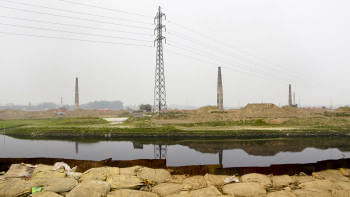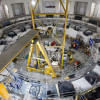Why I am excited about the nuclear fusion breakthrough

On December 13, 2022, it was reported that the researchers at US National Ignition Facility in California announced they had successfully created nuclear fusion in their labs, resulting in a net energy gain. It's a phenomenon previously unseen in our planet, only occurring in the Sun and other supernovas.
For a world desperately looking for greener alternatives, this promises to be a defining discovery. Climate change had taken a backseat since Covid's onset in 2019. Many countries were forced to shift their attention away from the onslaught of global warming and instead focused on saving their economies. While it's imperative to have financial security, it came at the cost of unbridled use of fossil fuels to revive stagnating industries.
Against this backdrop, the news of the nuclear fusion breakthrough is most welcome. It might just be what we need to phase out fossil fuels, providing the Earth and mankind an escape route from the ultimate destruction of nature.
Pending further research, this technology can revolutionise the energy sector as countries will finally have a viable alternative to petroleum-based fuels. As nuclear fusion is all about fusing small hydrogen isotopes together, it produces no waste. This is in stark contrast to fossil fuels and nuclear fission, which produces toxic greenhouse gases and radioactive waste respectively.
With no pollution to contend to, mass-scale use of nuclear fusion power plants might even help reverse the adverse effects of climate change. The small space required to maintain it further increases its appeal. It will negate the need to tear down vast forests and habitats to accommodate these plants. In turn, it helps maintain the weather and biodiversity of those areas.
Much like nuclear fission, the efficiency of nuclear fusion is really high as well. The aforementioned experiment produced a roughly 50 percent gain in energy, producing power equivalent to ten million kilograms of fossil fuel per use. In context, the current petroleum-based product demand in Bangladesh's power stations is 3.8 million tonnes every year. Not only does it solve Bangladesh's energy crisis, it also promises to drop our pollution to zero, which is now essential to preserve whatever is left of our nature and diversity.
Even though its future is bright, challenges still remain till nuclear fusion power stations become a reality. It took researchers 70 years to reach this point, and even by their admission, a lot of work remains to be done. The cost of building specialized labs, especially operating and maintaining the lasers, is astronomical.
With so much energy produced, the cables and transformers need to be adapted to control such big joules. Also, sourcing the fuel's deuterium from seawater and tritium from the crust is challenging even for the most sophisticated of countries.
Despite the hurdles, researchers remain optimistic of swift progression. When they began their research all those years ago, people wrote them off as "waste of time and money". But as Nobel-prize winner Niels Bohr once said, "Prediction is very difficult, especially when it's about the future."
Who knows? Nuclear fusion power stations might pop up in mass scale someday.
Our planet is on the brink of a gigantic catastrophe. Nature has abandoned us and natural disasters have become the norm. Unfortunately, no one seems to heed these warnings, putting the futures of both the youth and the mankind's existence in serious danger. The onus now lies squarely on governments to fund these projects and save our futures.
References:
1. The Guardian (December 13, 2022). US scientists confirm 'major breakthrough' in nuclear fusion.
2. Ministry of Power, Energy and Mineral Resources, Bangladesh data for 2021.
Inqiad is a passionate Bucks fan and a certified Giannis stan. Contact him at [email protected]

 For all latest news, follow The Daily Star's Google News channel.
For all latest news, follow The Daily Star's Google News channel. 









Comments